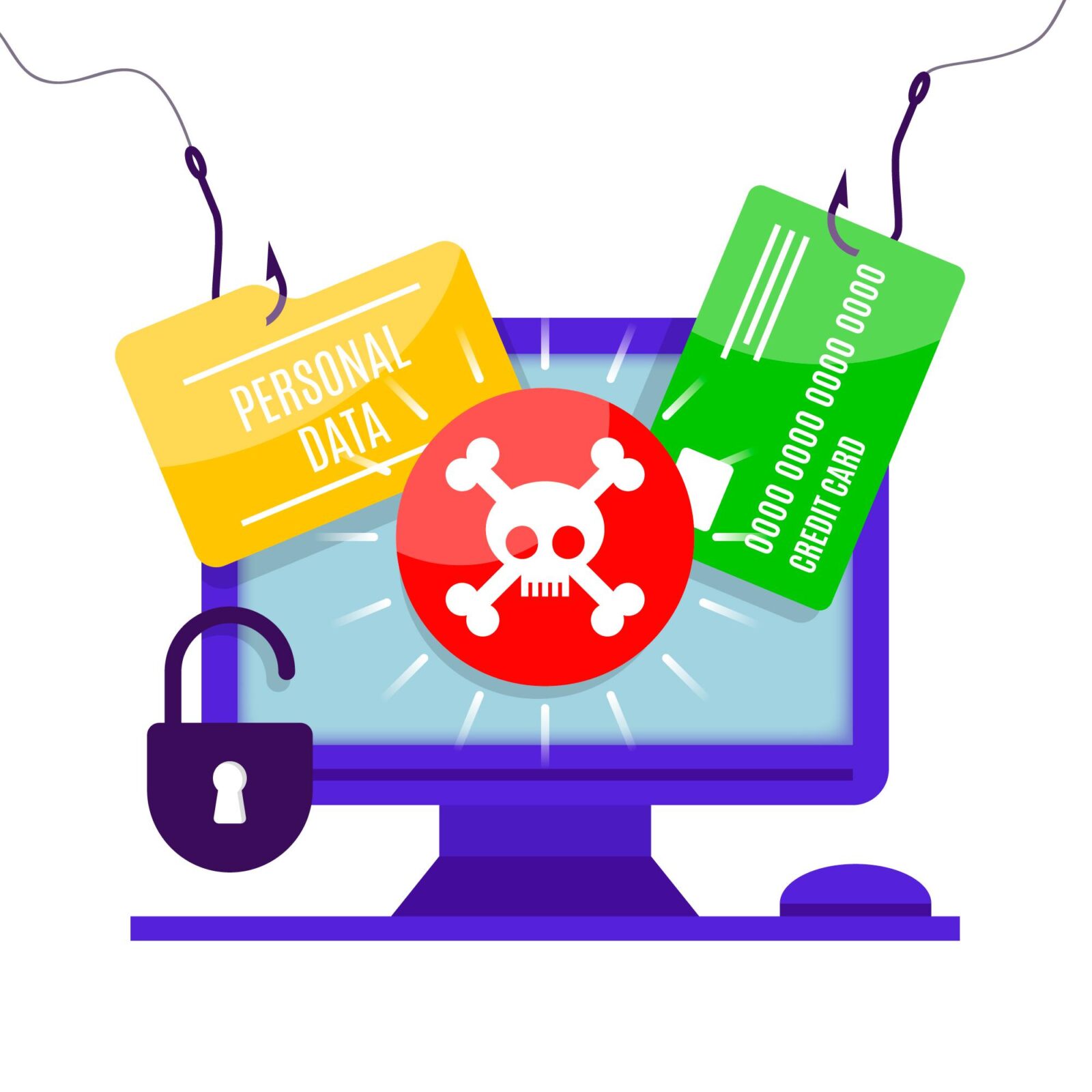Threats
Have you received an email or a notification requesting your contact information, e.g., credit card details, Social Security number and login credentials? If so, you may have been the target of a phish. Online scamming is becoming more and more widespread as a consequence of the growth of the internet and digital communications. I’ll walk you through the most typical sorts of internet fraud in this post and provide you advise on how to avoid them.
What is Phishing?
Phishing is a fraudulent activity that happens online, where the perpetrator masquerades as a reliable source, like a bank or social media platform, to deceive unsuspecting individuals into divulging their sensitive data. The most prevalent form of phishing takes place through email, wherein the attacker sends an email that appears to be from a credible source and urges the recipient to click on a link or download an attachment. Upon doing so, they are redirected to a counterfeit website that resembles the original one and asked to furnish their login credentials or personal info. Once they do, the victim is prompted for their login details or personal information and sent to a phony website that mimics the actual one.
How to Spot a Phishing Scam
Due to the attackers’ use of numerous strategies to make their messages appear authentic, phishing scams can be challenging to notice. To prevent falling for a phishing scam, you may watch out for the following:
- Verify the email address of the sender: Phishing emails sometimes originate from phony or spoof email addresses that are created to appear to be from a reliable source. If the email address of the sender seems dubious, thoroughly examine it and refrain from clicking any links or downloading any files.
- Make sure the URL is correct: If you are led to a website, make sure the URL is accurate. Phishing websites often have URLs that are similar to the real one, but with slight variations. For example, “www.faceboook.com” instead of “www.facebook.com”.
- Don’t click on links: Avoid clicking on links in emails that request your action. Instead, type the URL into your browser manually, or use a bookmark that you have saved previously.
Phishing emails are often riddled with errors in spelling and grammar, likely due to their origin from non-native English speakers.
What is Spoofing?
Another sort of internet fraud is spoofing, in which the perpetrator poses as someone else—such as a friend, a colleague, or a business—to mislead the victim into disclosing important information. Spoofing can occur via email, phone conversations, or text messaging, among other communication channels.
How to Spot a Spoofing Scam
It may be just as challenging to recognize spoofing schemes as phishing scams, but here are several warning signs:
- The sender’s phone number should be carefully checked if you receive a call or text message. Spoofed numbers often have a different area code or country code than your own.
- Verify the message: If you receive a message that asks you to take action, such as providing personal information or sending money, verify the message with the supposed sender before doing anything.
- Don’t trust caller ID: Spoofed phone numbers can also appear on your caller ID, making it difficult to know who is calling.
Other Types of Online Scams
You can also find a variety of types of online fraud, such as phishing and spoofing.
There are a few others, too:
- Malware: its software that’s designed to harm your computer or steal your personal information. Malware can be downloaded onto your computer through email attachments, infected websites, or malicious software programs.
- Lottery Scams: Lottery scams involve an email or message that claims you have won a large sum of money in a lottery or contest. The scammer will ask you to pay a processing fee or provide your personal information to claim your prize. However, there is no prize, and you will end up losing money or having your identity stolen.
- Romance Scams: Romance scams involve a fake online relationship, where the scammer will gain your trust and ask for money or personal information.
How to Protect Yourself from Online Scams
To avoid online scams, there are a few things you can do to prevent them:
- Install an antivirus program on your machine or device: Ensure that it is installed for protection against malware.
- Keep your software updated: In order to protect against potential vulnerabilities being exploited by scam artists, keep the software up to date, including web browsers and operating systems.
- Be cautious with your personal information: Only provide your personal information, such as your social security number or credit card details, on secure websites that you trust.
- Don’t trust unsolicited messages: Be cautious of any unsolicited emails, phone calls, or text messages that ask for personal information or money.
- Check for HTTPS: When you are on a website that requires personal information, check that the website URL starts with “https” instead of “http”. The “s” indicates that the website is secure.
Conclusion
Online scams can be difficult to recognize, but with the correct information and safety measures, you can guard against falling for one. Keep in mind to be careful with your personal information, to update your software regularly, and to confirm the validity of any calls or texts you receive. You can be safe and secure online by exercising caution and awareness.
In conclusion, internet frauds are on the rise and come in a variety of shapes and sizes, including phishing, spoofing, and malware. By being cautious with your personal information, checking the legality of any messages or calls you get, and using anti-virus software to guard against malware, you may defend yourself against these frauds. You can be safe and secure online if you abide by these recommendations.
.


Leave a Reply